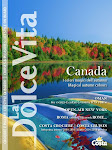Dear Readers
I was prompted to write this article as I was soaking up the atmosphere and excellent service during a civilized Darjeeling tea afternoon at the Taj Krishna Hotel in Hyderabad India. Just as I was enjoying the moment of life, my partner suddenly sneezed for no apparent reason? The shock reaction of the people around us and their responses towards us suddenly changed, as clearly they were questioning whether we had caught the first case of Swine Flu in India. Only the previous night on CNN we saw 16 Mexican travellers in quarantine in China, just because of their nationality and even though they had no trace of the dreaded Swine Flu. The buzz on the streets of India was to avoid contact with Europeans that have just arrived to the country, which probably explains the reaction during tea-time. My partner by the way is perfectly well and she just sneezed as one occasionally does, but at this moment all those what if questions started to come to the fore…
• What would happen if we did catch Swine Flu?
• What would happen if we just caught a cold or seasonal Flu?
• How can we protect ourselves to avoid catching any Flu?
• What in fact is the difference between Seasonal and Swine Flu?
• Are we at greater risk when travelling?
Fuelled by the mass media, the term Swine Flu has gripped public attention in the past few weeks. Statements and speeches from the World Health Organization (WHO) and world leaders alike tell us that this health scare is certainly at least something we should be aware of in the capacity of frequent travellers. There is however much confusion in the air about the reality of the real danger that Swine Flu presents and other similar outbreaks, in addition to what the best precautions are to avoid catching what could otherwise be dangerous. Here below we have attempted to answer these questions and give the best possible Perpetual Traveller advice…
The difference between Swine Flu and seasonal Flu
Though symptoms for swine flu are similar to seasonal influenza, it's important to note, they are not the same. Here’s a statistic; every year more than 30,000 Americans die from seasonal Flu. However, those who die are generally the most vulnerable in life, such the elderly, the very young and those with weak immune systems for one reason or another.
On the other hand Pandemic Influenza, as this Swine Flu threatens to be, attacks those with the most resilient immune systems, generally being people between the ages of 20 and 40. It causes an inflammatory response (particularly in the lungs), which leads to death. If we look at Mexico where it all started, deaths have occurred in 20-40 year olds. Although this was not unanticipated; in fact it is exactly what experts expect a pandemic flu to do.
Swine Flu is actually a respiratory disease and has some elements of a virus found in pigs. There is no evidence of this disease circulating in pigs to date though. Swine Flu has been confirmed in a number of countries and it is spreading from human to human, which could lead to what we mean by a Pandemic Flu outbreak. Pandemic Flu differs from ordinary Flu, because it’s a new Flu virus that occurs in humans and tends to spread very quickly from person to person, potentially worldwide. The WHO is still closely monitoring cases of Swine Flu globally to see whether this virus develops into a Pandemic. The worry here is that, as it is a completely new virus, no one human will have immunity to it and everyone is potentially at risk of catching it. This includes healthy adults as well the elderly, frail, young children and those with existing medical conditions or weak immune systems.
How does a Pandemic Flu spread?
All Flu viruses are made up of tiny particles that alarmingly can be spread through the droplets that come out of ones nose and mouth when a person coughs or sneezes. When someone coughs or sneezes without covering their nose and mouth with a tissue, those droplets go airborne and can spread, meaning others are at risk of breathing or taking them in.
Moreover, if you cough or sneeze into your hand, those droplets and the germs in them are easily spread from your hand to any hard surface that is touched and they can survive on such a surface for some time. Everyday items could be hold the particles such as door handles, computer keyboards and your mouse, mobiles, remote controls in your hotel room, ordinary phones and all common surfaces whereby someone with a Flu virus can touch.
Once someone touches these surfaces and then touches their eyes, nose or ears, the germs can enter their system and that person will become infected. This is how all cold and Flu viruses, including Swine and Seasonal Flu, are passed on from person to person.
Is there a vaccination?
Not at this stage for Swine Flu, but for Seasonal Flu there is. Swine Flu involves a completely new type of virus. A vaccine can only be developed when the specific strain has been identified and once this occurs, it would then take several months to produce.
How can you protect yourself against Flu?
The best thing you can do to protect yourself is to follow quality personal hygiene practices. These will help to slow the spread of the virus and will be the single most effective thing you can do to protect yourself and others from infection.
When you cough or sneeze it is especially important to follow the common rules of clean hygiene to prevent the spread of germs. Here are some tips…
• Always carry tissues.
• Use only clean tissues and bin them after one use.
• Do not use old Hankies.
• Wash your hands with soap and hot water frequently.
• Travel with a sanitizer gel and use it often.
• If you touch any foreign surface that could be infected, wash you hands or use the gel.
• Be careful of who you kiss or shake hands with.
• Use a face mask if you are on a plane, train or enclosed area and suspect someone has Flu.
NOTE: Keep in mind that recent evidence suggests masks may not work that well.
Is it more dangerous to travel?
If you travel frequently and visit enclosed places that are highly populated, you are at greater risk. Therefore, you should practice the above sanitation rules as a matter of perpetual habit.
What are the symptoms?
The symptoms tend to come in the form of a sudden onset of…
• Fever
• Cough
• Shortness
• Breath
• Headache
• Sore throat
• Tiredness
• Aching muscles
• Chills, sneezing
• Runny nose
• Loss of appetite
I trust that this gives you a clear view of what Flu is all about and how you can protect yourself when travelling. Remember that you do not need a Flu epidemic scare to practice our suggested common hygiene tips. If you follow this advice you will catch less colds and maintain better health as you travel.
Healthy travels!
Grant Holmes
Editor
Perpetual Traveller














No comments:
Post a Comment